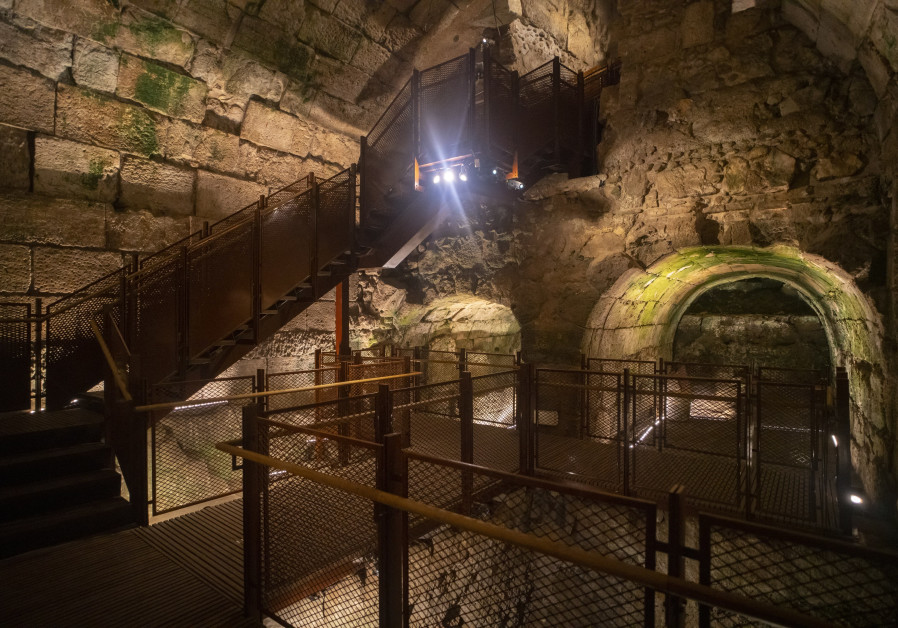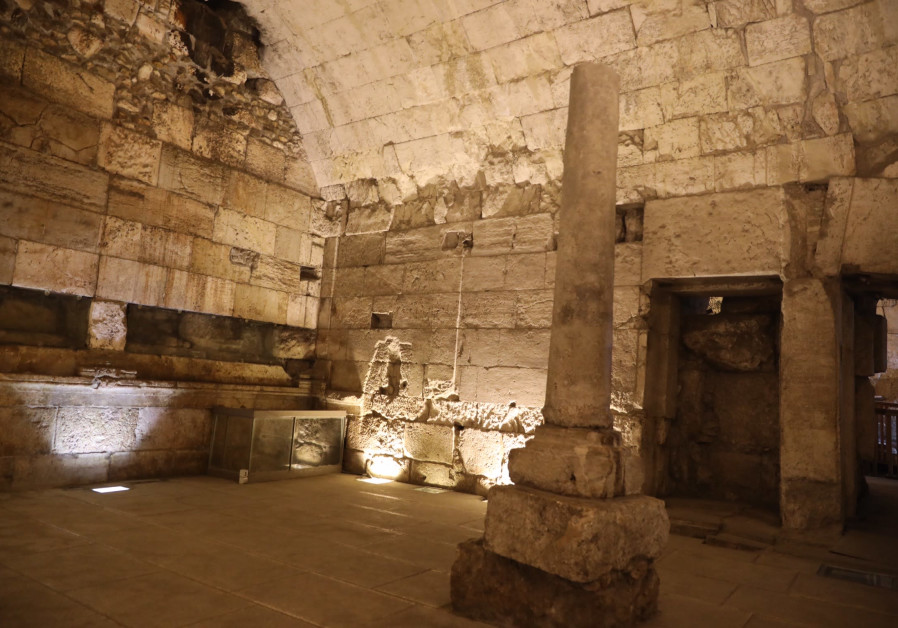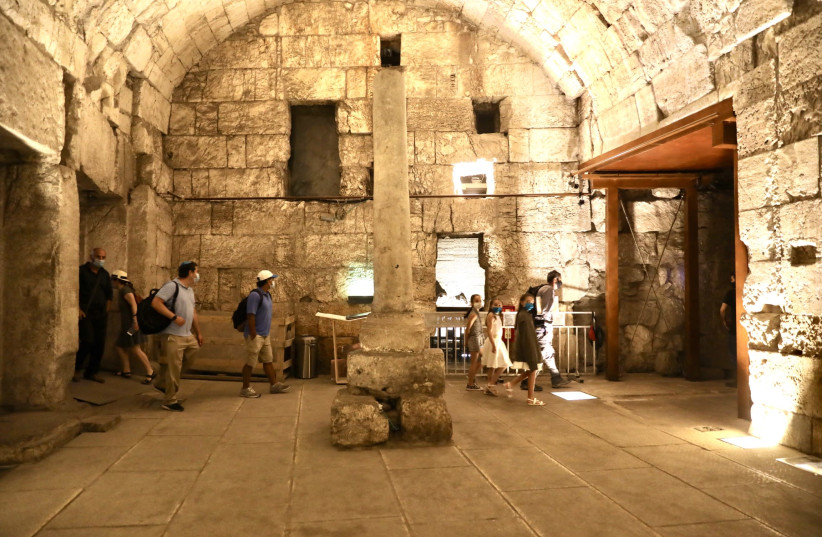Lavish Second Temple period building found by Western Wall in Jerusalem
The structure, located adjacent to the Wall, was probably built around 20 or 30 CE, only a few decades before the Temple was destroyed by the Romans.
In the first century CE, just decades before the Temple was
destroyed by the Romans, Jerusalem was a booming city, buzzing with
pilgrims and a frenzy of construction.
A
glimpse into its hectic life some 2,000 years ago will be offered to
modern visitors by a recently uncovered grand building that will soon be
part of the Western Wall Tunnels itinerary, the Antiquities Authority and the Western Wall Heritage Foundation announced Thursday.
Archaeologists uncovered the lavishly endowed building, which was
erected around 20-30 CE. It was probably used to welcome important
dignitaries and members of the elite on their way to visit the Temple
Mount, they said.
“This
is, without doubt, one of the most magnificent public buildings from
the Second Temple period that has ever been uncovered outside the Temple
Mount walls in Jerusalem,” said Dr. Shlomit Weksler-Bdolach, the IAA’s
excavation director.
The
structure contained two imposing rooms decorated with elaborate
Corinthian capitals protruding from the walls. They were connected by
another chamber featuring a sumptuous fountain with running water.
The building was located on the main road that led to the Temple Mount from the west, Weksler-Bdolach said.
The rooms offered wooden sofas running all around the walls, where visitors could rest, drink and eat reclined.
“The furniture did not survive, but we can still spot their imprint on the walls,” she said.

Eating while reclining was a common practice for the elites
and for lavish meals, as seen in the Passover Seder, where the
participants are invited to eat and drink in this manner at certain
times to celebrate freedom.
Part
of the building was first revealed during work conducted by British
archaeologist Charles Warren in the 19th century. He reached the roof of
one of the chambers and penetrated it through a hole in the stonework.
“The
structure was completely filled with soil, but just by spotting the
highest parts of the walls, he understood that it was a prominent
building,” Weksler-Bdolach said.
More than a century later, the excavations started again, and in recent years the building was completely uncovered.
“We
were able to reach the floor and collect pottery and coins, as well as
organic samples for the carbon-14 dating, which have all allowed us to
understand when the construction works started,” Weksler-Bdolach said.
Between
the first century BCE and the first century CE, Jerusalem witnessed a
lot of construction, as new buildings were erected, and old buildings
were expanded.
“They did not know that very soon the city would be destroyed,” Weksler-Bdolach said.
The
building went through important transformations. One of the dining
halls was dug up and turned into a mikveh ritual bath about seven meters
long.
“The beautiful floor was removed, and a wall was torn down,” she said. “It is the largest mikveh we ever found in Jerusalem.”
The
steps and the bath are still visible today. Pilgrims had to visit the
Temple in a state of ritual purity, which required immersing in a
mikveh.

“In the plaster used to cover the pool, we found coins from the
year 54-55 CE, just a few years before the destruction of the Temple,”
Weksler-Bdolach said.
The newly uncovered building is set to be integrated into the Western Wall Tunnels itinerary open to the public in the upcoming weeks.
“The
new route provides a better understanding of the complex and important
site known as the Western Wall Tunnels, while emphasizing the extent of
this magnificent building,” IAA architect Shachar Puni said. “It creates
a new visitors’ route that passes through the building and leads to the
spacious compound at the foot of Wilson’s Arch [one of the bridges
leading to the Temple Mount], which was also excavated by the Western
Wall Heritage Foundation and the Antiquities Authority.”
“It
is exciting to reveal such a magnificent structure from the Second
Temple period while we mourn the destruction of Jerusalem and pray for
its restoration,” Western Wall Heritage Foundation chairman Mordechai
Soli Eliav said, referring to the three weeks between the 17th of Tamuz,
when the fall of Jerusalem began, and the Ninth of Av, when the Temple
was destroyed in 70 CE, which this year is on July 18.
“These chambers are part of a new walk through the Western Wall Tunnels, where visitors will view fascinating finds and walk for the first time along the entire route among Second Temple-period remains that illustrate the complexity of Jewish life in Jerusalem between the Hasmonean and the Roman periods,” he said.


No comments:
Post a Comment
Stick to the subject, NO religion, or Party politics